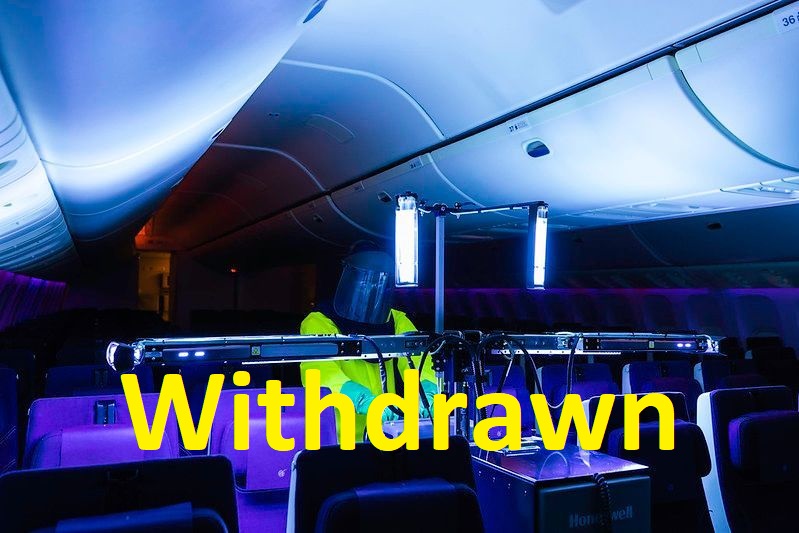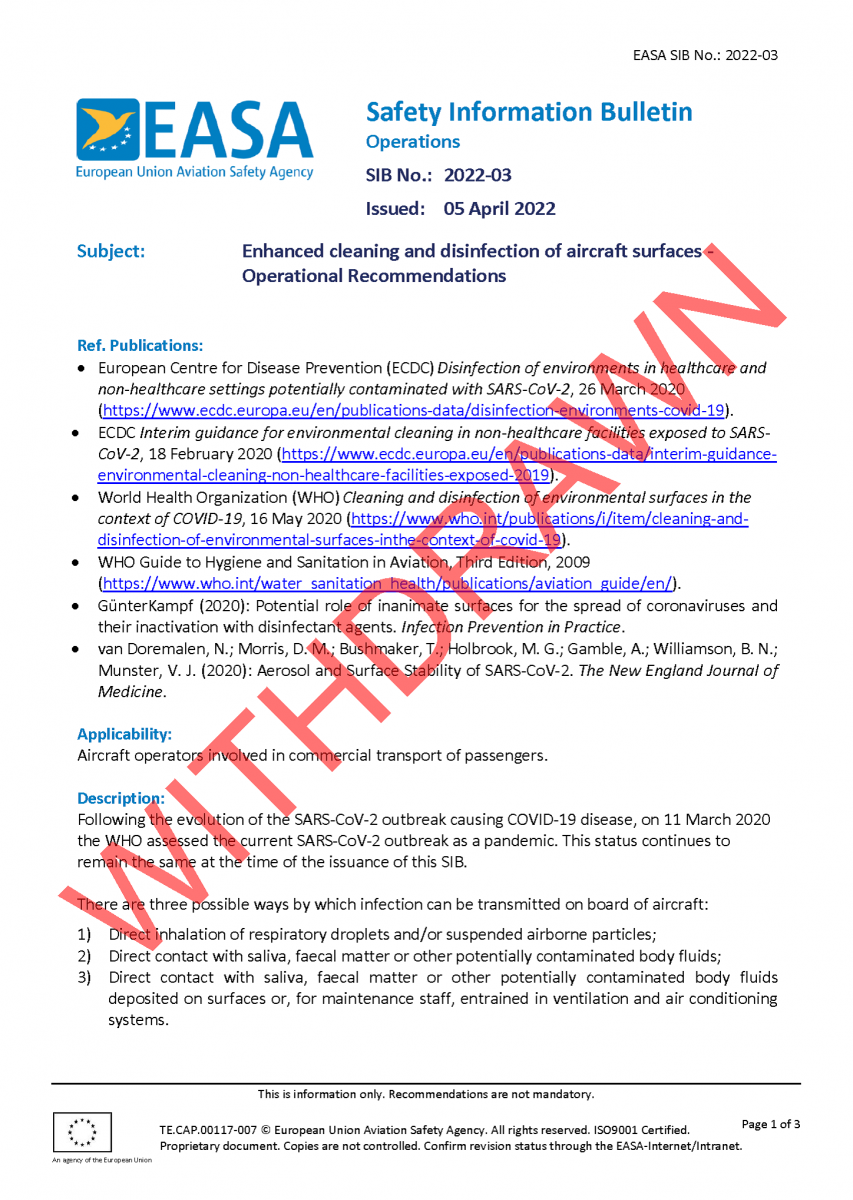


If you are an operator or airlines, you may no longer follow the Safety Information Bulletin SIB 2022-03 that recommends operational recommendations regarding the enhanced cleaning and disinfection of aircraft surfaces during the COVID-19 pandemic, as EASA has withdrawn it.
During the peak of Pandemic, in the pusuit of advancing its hygiene measures onboard, many carriers had adopted several recommended measures , even including Ultraviolet Cabin Cleaning technology inside the aircraft cabins and common use areas.
Things have changed drastically within last 18 months or so , now the European Union Aviation Safety Agency (EASA) and the European Centre for Disease Prevention and Control (ECDC) have decided to formally retire the EASA-ECDC joint Aviation Health Safety Protocol (AHSP), while acknowledging its significant value during the high SARS-CoV-2 circulation periods during the pandemic.
This decision is taken in the light of the decreasing or stable trends observed in the European Union/European Economic Area (EU/EEA) indicators based on pooled country data in all age groups as described by the European Centre for Disease Prevention and Control (ECDC) since March 2023 and the WHO statement of May 5, 2023 declaring that
“COVID-19 is now an established and ongoing health issue which no longer constitutes a public health emergency of international concern (PHEIC)”.
EASA has withdrawn the SIB 2022-03 of April 5, 2022 providing operational recommendations regarding the enhanced cleaning and disinfection of aircraft surfaces during the COVID-19 pandemic and SIB 2021-06 of March 25, 2021 providing operational recommendations regarding the COVID-19 vaccination campaign for the crew members.

The publication of the original AHSP in May 2020, and its subsequent updates, promoted a harmonised approach on measures to be implemented that allowed improved compliance by the passengers and aviation stakeholders and aimed to lower the disturbance to operations while ensuring a uniform level of health safety for the European population, without endangering flight safety.
EASA and ECDC encourage passengers, crew members, aviation stakeholders and national competent authorities to give proper consideration to the value of the non-pharmaceutical interventions implemented throughout the pandemic, and to use them whenever deemed necessary, especially in crowded indoor settings, with a particular focus on proper ventilation, hygiene measures and respiratory etiquette, including use of surgical masks or respirators for anyone with respiratory infection symptoms and for people with risk factors for severe respiratory viral disease, particularly during periods of high respiratory viral infection prevalence.
In the early days of COVID-19 pandemic evidence-based knowledge was limited. Nevertheless, EASA and ECDC worked together to develop the AHSP and the subsequent updates, key documents for the safe resumption of travel, and the base for policy measures for Member States.
EASA and ECDC will sign a Memorandum of Understanding in the coming months allowing the two agencies to work closer together, applying the lessons learned during the COVID-19 Pandemic, to prevent to the extent possible similar situations from happening in the future.
Additionally, EASA has initiated a research programme with the support of the European Commission which will result in a call for tenders in the coming months, aiming to identify new technologies that would further enhance health safety of passengers and crew and reduce the already low risk of contamination during air travel.
Related Article.....
